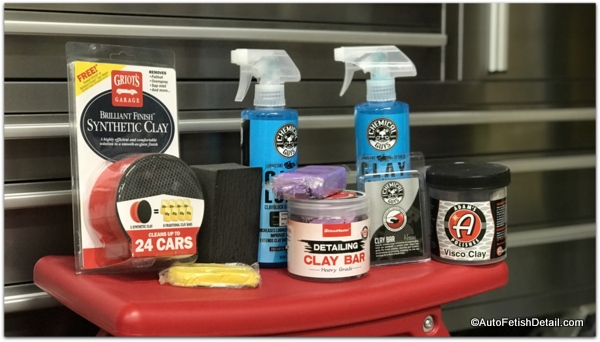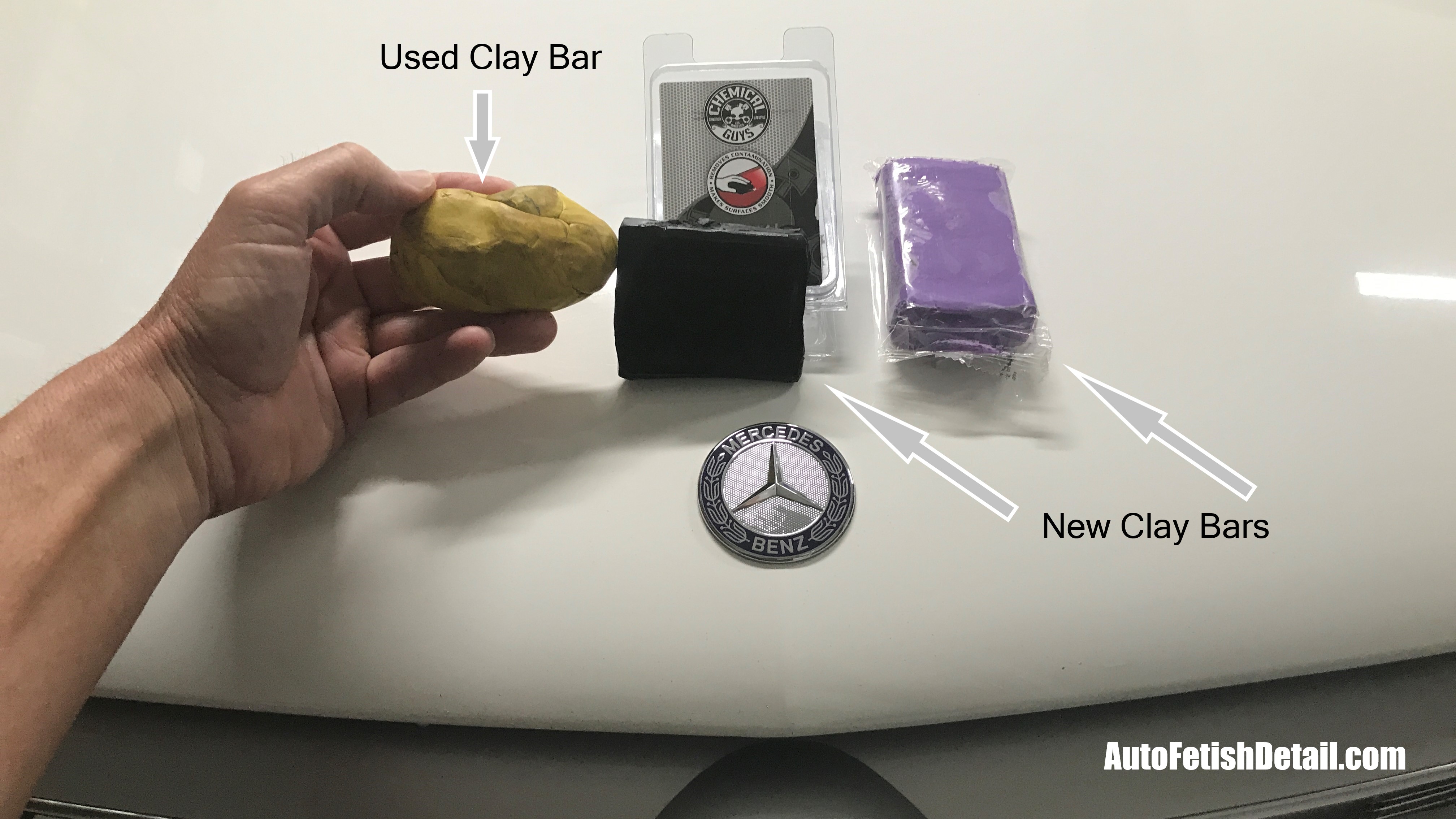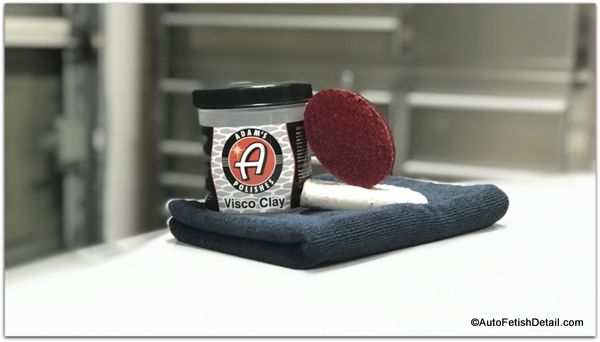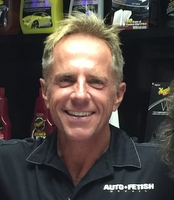How to Clay Bar:
You don't know what you don't know
Any search on how to clay bar will deliver a mind blowing amount of results!
The problem is that you likely even have enough knowledge or experience with the clay bar to begin asking the right questions.
This means the industry and the endless so-called experts will simply lead you down a path based on their agenda -an agenda based on some of your money ending up in their hands.

How to Clay Bar:
The simple answer
If you are here strictly to learn how to clay your car, then we will begin with that:
- Wash car first to remove basic dirt
- Dry car
- Choose what you consider as the best clay bar kit
- Spray clay lube onto small section of paint surface
- Place clay bar on wet area
- Rub clay bar back and forth until there is no noise and no resistance
- Wipe area with cloth to remove residue
- Repeat these steps until your entire car has been clayed
Based on my experience in teaching all things detailing related, I am gonna guess that the basic instructions on how to clay bar a car will be followed by a hundred other questions that have to do with the clay bar and the process of claying your car.
okay...maybe not a hundred questions; but a lot of additional questions about the clay bar.
How to Clay Bar Car:
Asking the right questions
As a beginner, (which I know you are or you wouldn't be here to begin with) you will be in the unfortunate position of lacking the experience and knowledge to be asking the right questions.
The Internet is filled with endless opinions from people who do little more than repeat the bad information from other non-experts. This does very little to help a beginner like yourself begin asking the right questions:
- What is the clay bar?
- What does clay bar do?
- Should you clay bar your car?
- Does the clay bar scratch car paint?
- How often should you clay bar?
See how quickly one question turns into a string of other relevant questions?! But if you are looking for answers in the wrong place you could find yourself learning bad information.
And eventually bad information will deliver bad results.
I don't want you getting bad results. I also don't want you getting bad information to begin with that would eventually lead to bad results.
What is a Clay Bar?
The clay bar in most simple terms is a tool. Not your typical tool like other detailing tools, but still a "tool".
The clay bar is synthetic material that resembles stiff or firm modeling clay, and usually comes in a palm size wrapper or container. (You can also think of Play-Doh if you are old enough to remember that)

These clay bars can be made in any color and any size, and have a tacky feel to them. Because they are tacky, you need some kind of liquid lubricant to use a clay bar on your car. (more on this further down the page)
What Does a Clay Bar Do?
What a clay bar is, will not answer what a clay bar does.
A clay bar is used to remove what are called bonded surface paint contaminants. Which is a glorified way of saying that a clay bar is used to remove pollution that floats around in the air that has become stuck to your car paint.
Air pollution is a massive generalization. Floating around in the air are endless "types" of pollutants. And like anything else in life, not all air pollutants are created equal.
Within the air pollution will be particles that have the ability to not only bond to your paint surface, but etch down into the paint.
These bonded pollutants do not come off when you wash or wax your car, or even when you polish your car. It is for this reason you will need to clay bar your car as a separate step.
As you use the clay bar, the bonded contaminants will be "sheared" away by the clay bar. Some people claim the clay bar will "pull" the contaminants from your paint, others say the clay bar will shear these bonded contaminants away.
I know for certain the clay bar shears these contaminants away little by little as you rub back and forth.
The reason I know this to be true is that you can rub the paint until the paint is completely smooth, and yet, you will see some contaminants that "remain" —as tiny specks that are rust or light brown in color.
This is because some contaminants can etch into the clear coat below the surface level. Which then means that the clay bar is not "pulling' these contaminants out of the paint, but shearing them off at the surface level.
Should You Clay Bar Your Car?
Yes! At least I think you should.
And if you follow the advice of most people, they would also say yes. But before you can say yes to claying your car, you need to be fully aware of something most people never talk about when it comes to using detailing clay on your car.
Using the clay bar can scratch your paint!
I say can, because this is based on a few things:
- How much "pollution" is bonded to your paint surface
- The "types" of pollutants bonded to your paint surface
- How much rubbing will be required
- Your definition of "scratch"
I find it very interesting how so few people discuss the trade-off associated with learning how to clay bar your car, using the clay bar on your car, and the possible risks associated with claying your car.
I hope you are beginning to understand what I mean about asking the right questions. Just as I hope you are beginning to feel your mind expand as I help expand your mind from my decades of professional experience.
 Just when you think the subject can't become any more confusing than it already is. This clay bar version from Adam's isn't labeled as clay bar, but as VISCO CLAY. Nothing more than a marketing attempt from a company doing what they can to be "different".
Just when you think the subject can't become any more confusing than it already is. This clay bar version from Adam's isn't labeled as clay bar, but as VISCO CLAY. Nothing more than a marketing attempt from a company doing what they can to be "different".Not All Pollution is Created Equal: this means that some bonded pollutants will come off easier than others. As you rub the clay bar back and forth across your paint, some of those bonded contaminants will come off easily, while others will require more rubbing.
Air pollutants can come in endless varieties. Much of the pollutants will be ferrous in nature. This literally means that these tiny particles can be made of a metal type of material. This is often labeled as rail dust, but can be a result of many sources.
Tail pipe emissions, to emissions from factories. It is for this reason that the term industrial fall-out is also used when talking about using a clay bar to decontaminate your car paint.
How Much Rubbing Will Be Required: If you have never learned how to clay bar a car before and this will truly be your first rodeo, you will find out very quickly that the different types of bonded pollutants will come off at varying rates.
And once again, the more you rub, the more likely you will "scratch" your paint.
Not All Scratches Are Created Equal: Since car paint and scratches are never wanted in the same sentence, most people refrain from using the term "scratch" when talking about using a clay bar.
The more appropriate term would really be "abrading" or micro-marring.
As a beginner, if I said that using a clay bar would scratch your paint, the wrong image would likely form in your mind.
What really happens is that extremely small, abrasion-like scratches will begin to develop on your paint as you rub the clay bar back and forth.
Once again, the more rubbing required, the more likely you will create these abrasions.
How to Clay Bar vs. Why to Clay Bar:
Understanding the difference
If what I am suggesting is really true, then why the heck would a person ever want to clay bar a car...EVER??!!
Glad you are asking. Because I have an answer for you.
I think most of us understand that everything in life has trade-off's. You trade one benefit of lower value in exchange for a benefit of higher value.
Most professionals understand just how damaging and unwanted it is to have these contaminants bonded to your paint. Not only do these contaminants continue to etch deeper and deeper into your car's clear coat (the top layer of any factory original paint system), but having this gritty texture that is created from these pollutants interferes with everything you do:
- Washing/drying your car
- Waxing your car
- Polishing your car
Everything you would need or want to do to your car is effected by these pollutants that bond to your paint surface. Not only does this "grit" from the pollutants affect the experience by adding a certain level of resistance, but it also means that any of your products will also be affected.
What You Need to Know: If you have heard of the clay bar and understand how to clay bar your car, you likely have never been told about the possibility of marring your paint surface. I have had people argue with me claiming that using the clay bar will not scratch paint.
Which is also a possibility, but this would be based on claying a car with very little pollutants that would require very little rubbing. Just as this would also require a person to not know how to examine paint to determine if in fact any marring had taken place while they were claying their car.
So the choice comes down to accepting that your car will eventually get these pollutants bonding and etching into your car paint. If you are okay with this, then you will never need to learn how to clay bar your car.
But eventually, most car owners find this unacceptable as the pollutants build-up over time and their car paint feels grittier and grittier.
What most people also accept is that this micro-marring is so fine in appearance, that simply waxing their car after claying their car is all that is necessary to remove and/or hide this micro-marring.
Most car owners also accept that they will eventually want to polish their car to restore the gloss and depth to their car paint. Using the clay bar prior to any car polishing will not only deliver better end results, but the polishing will remove any of the micro-marring created by using the clay bar on their car.
How Often Do You Need to Clay Bar Car
This depends.
- What are your expectations or standards for your car
- The air quality where you live
- How long you allow dirt to remain on your car
The short answer is that you never have to clay bar your car. You would simply have to accept the trade-off of not claying your car by accepting the accumulation of dirt particles attaching, bonding, and etching into your car paint.
The long answer is that every car would be better by using the clay bar to remove the bonded contaminants... regardless! Even a brand new car in most cases would benefit from the use of the clay bar.
Until you have experienced how silky smooth and glorious a freshly clayed and wax car feels, it is hard to imagine! And in most cases when a person like yourself experiences this for the first time, once you see and feel how great your car is, you willingly accept any trade-off associated with using the clay bar.
Another factor is based on your expectations for your car. Some people accept nothing but silky smooth paint al the time. This mean they will clay their car more frequently. With that said, claying your car as part of ongoing maintenance keeps the build-up of these pollutants to a minimum.
This means that if you clay your car regularly (say once every 4-6 months), the amount of rubbing you would have to do is extremely minimal.
Most dedicated car owners accept that they will probably only need to clay their car about once a year. So the maintenance schedule on the majority of car owners would look like this:
- Wash car every 1-4 weeks
- Wax car every 1-4 months
- Clay bar car initially, then clay bar car every 6-12 months as you determine (always follow-up any clay bar treatment with a fresh coat of wax)
How to Clay Bar Car Summary
I have covered a lot of material on this page with my attempt to teach you how to clay bar. Allow me to summarize the key points of learning as a conclusion:
- Your car will need to be clayed at some point
- There is a chance that the clay bar will produce micro-marring
- In most cases, a simple coat of car wax will be enough to remove/cover-up this micro-marring
- I have yet to meet a car owner or customer that wasn't completely thrilled at the results of claying and waxing their car
- Your car may have such a trivial amount of pollutants bonded to the paint that only a few back and forth rubs of the clay bar will be all that is required per section
- Since your car will always be exposed to dirt, you will need to clay bar car as part of ongoing maintenance (most dedicated car enthusiasts clay their car about once a year)
I hope I have helped you become a more informed car owner so you can make more informed decisions.
Sincerely,
Darren Priest
|
|
